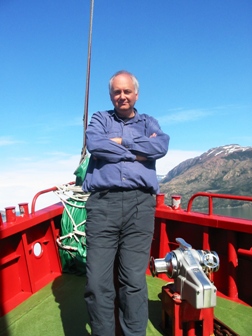
Peter Gutteridge FGS* has an alarming idea. Lithostratigraphy is a waste of time.
Geoscientist 18.3 March 2008
It was an epiphany. As I was sitting through a talk too far during the pre-Christmas conference season, I realised that it was about time we all agreed to abolish lithostratigraphy.
My main reason is that, apart from playing snap with rocks, the logic behind it has no basis in geology. We are almost at the stage where the geometry, continuity and lateral relationships of every sand body can be seen on 3D seismic and if we followed lithostratigraphic logic we should really give each sand body a different name. Alternatively you could try to simplify the picture by grouping such sands in some way, but then you cease to be doing lithostratigraphy. We also know that some rock units (actually most rock units) are diachronous - but again, we have now passed into the realms of chrono- or sequence stratigraphy.
I always regard the absence of a lithostratigraphic scheme as a great time-saving benefit because it clears the path to understanding what is really going on in a basin. It is such a waste of time to try to reconcile one or more previous schemes which you then have to ignore because none of them makes any geological sense. Unfortunately, lithostratigraphy will always comes back to haunt you because, at some stage, you have to explain to the client why you have re-interpreted or ignored their favourite lithostratigraphic scheme. This always leads to an argument that invariably gets personal; one manager told me that my new interpretation of his reservoir was not acceptable because it reduced the reserves in one of his lithostratigraphic units that would reduce his bonus!
Of course, one must try to keep description separate from interpretation, but (getting real) you can’t. Data gathering and description is always done with the aim of interpreting something. What makes it worse is that no matter how clearly authors state that their lithostratigraphic scheme is purely descriptive, the next person will inevitably use it as an interpretation tool and draw their correlation lines accordingly.
In that conference I was sitting through before Christmas, talk after talk showed that lithostratigraphy was actually inhibiting any useful insight into what happened in that particular basin. I hate to think how much oil and gas is sitting in the ground unproduced because the reservoir model was based on lithostratigraphy.
You could argue that one way out of this is simply to produce a new lithostratigraphic scheme that incorporates the new data. In my view this is no longer an option. Lithostratigraphy has been so superseded by sequence stratigraphy and with the advent of techniques such as 3D seismic that there is really no excuse to carry on using such a wasteful and dangerously misleading technique.
Does anyone want to join me in consigning lithostratigraphy to Room 101?
* Peter Gutteridge is Director of Cambridge Carbonates Ltd. a consultancy group specialising in carbonate and evaporite sedimentology and diagenesis for the oil industry.
He holds a PhD in carbonate sedimentology from Manchester University a season ticket from Derby County FC.
• What do you think? And how would BGS map without lithostratigraphic units? If you have a view, email the Editor at
[email protected]